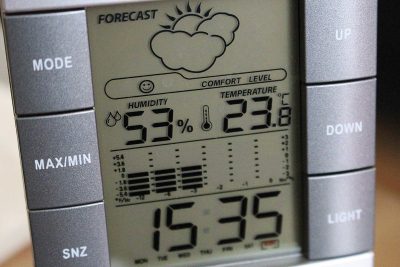×


We have detected your country as:
Please click here to go to the USA website or select another country from the dropdown list.
by: Ilse Strauss, Bridges for Peace
An Israeli start-up is paving the way to a future where we can conjure up energy out of thin air. In a society focused on harvesting energy from renewable sources such as the sun or the wind, ThermoTerra takes things one step further. This Israeli company develops heating and cooling technology based on a novel source of renewable energy, harnessing power from the energy created during natural fluctuations in humidity for heating and cooling residential and commercial buildings.
The technology is based on the significant amounts of energy that can be harvested from the changes in the relative humidity of the air. It then uses Internet-of-Things sensors and artificial intelligence algorithms to capture this energy and apply it to heat or cool buildings.
“Water vapor in the air that’s absorbed onto or into an absorptive material transfers a significant amount of energy,” ThermoTerra founder and CEO Dror Zchori told Israel21c.
When temperatures soar, the ThermoTerra technology attracts hot, dry air, storing it in hygroscopic material like hempcrete, silica gel or wood wool insulation in a building’s walls. As the air evaporates, it absorbs energy, resulting in a cooling effect.
 The flip side also holds true. When temperatures plummet, the ThermoTerra technology attracts cold, humid air. Its absorption results in a heating effect.
The flip side also holds true. When temperatures plummet, the ThermoTerra technology attracts cold, humid air. Its absorption results in a heating effect.
“It’s a natural phenomenon,” Israel21c quoted Zchori as saying.
Sensors embedded in the building’s walls operate the ThermoTerra system, with smart algorithms monitoring the temperature to gauge when to attract hot or cold air. The algorithms can also be connected to external weather forecasts to enable the system to store up hot or cold air in advance for future climatic changes.
Photo Credit: Click on photo to see credit
All logos and trademarks in this site are property of their respective owner. All other materials are property of Bridges for Peace. Copyright © 2024.
Website Site Design by J-Town Internet Services Ltd. - Based in Jerusalem and Serving the World.